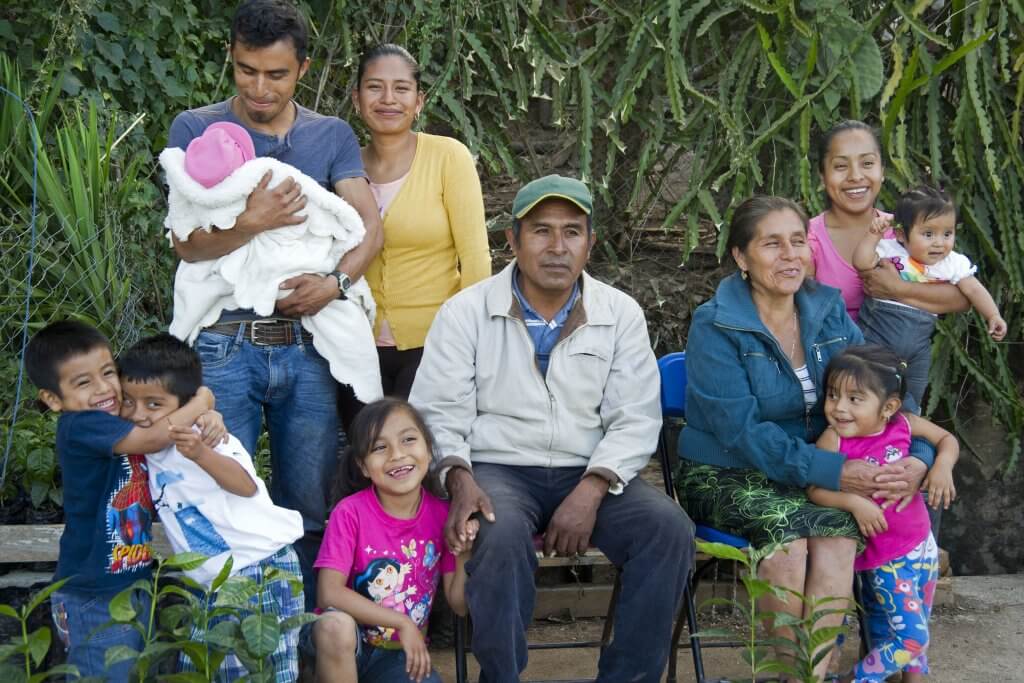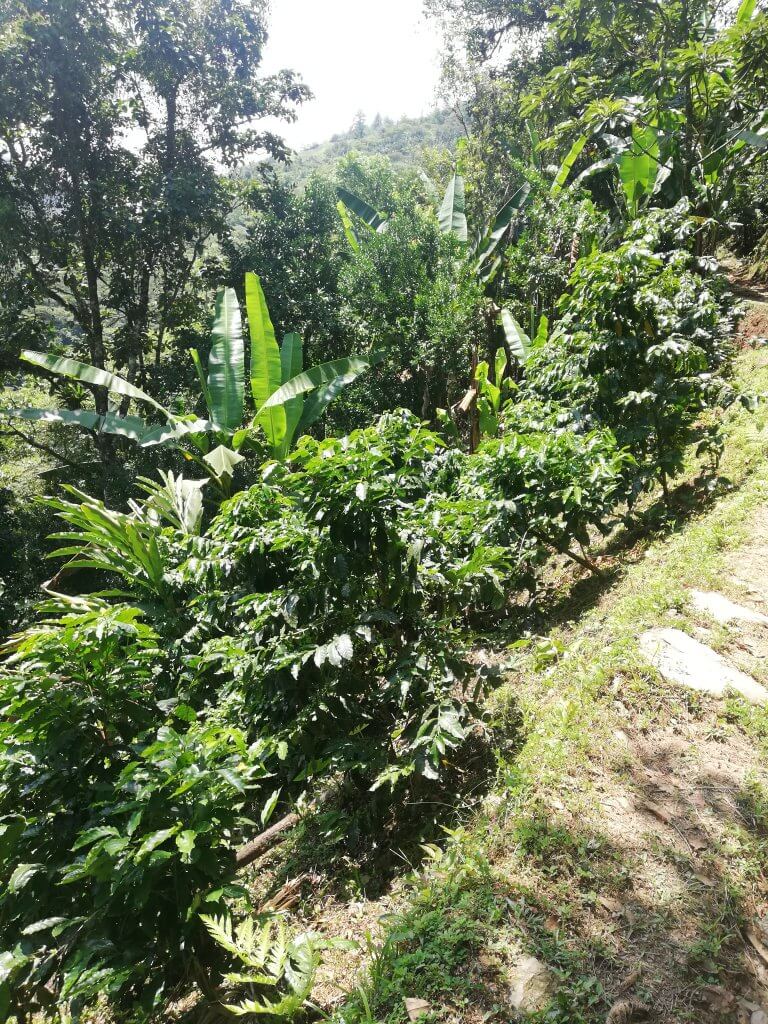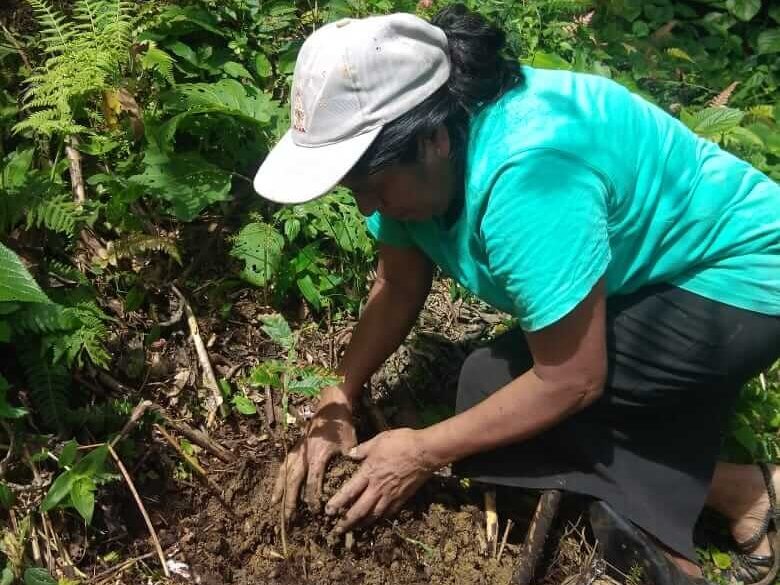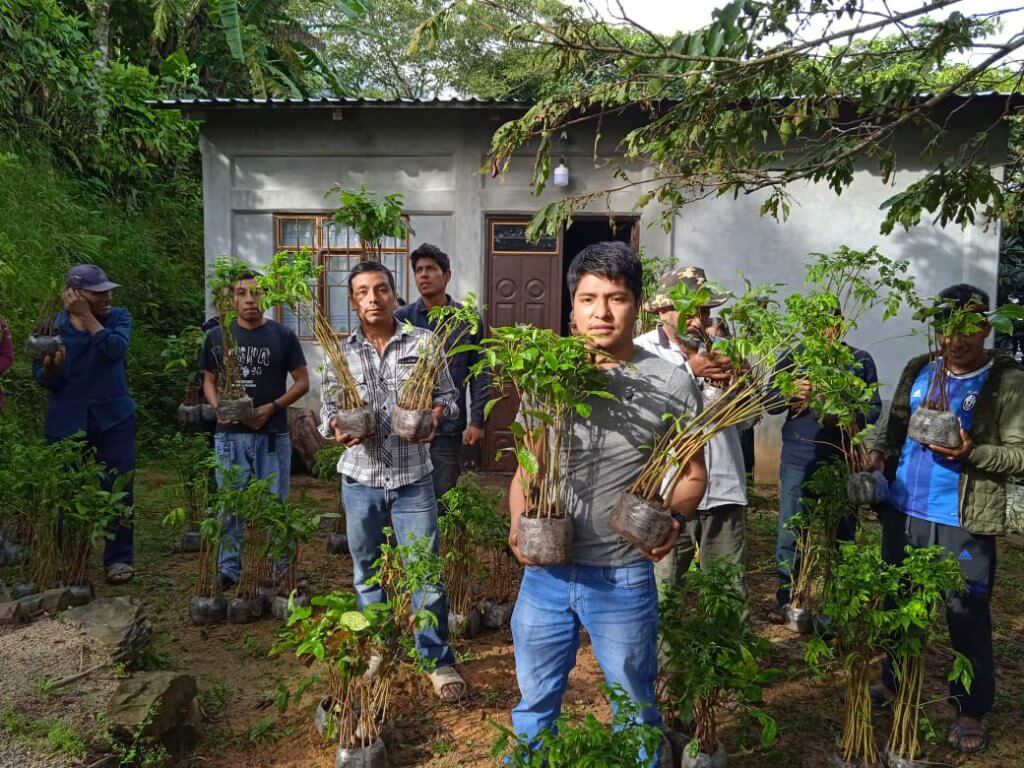One year ago, Livelihoods was publishing The Hands Restoring the Earth, a book telling the incredible story of farmers who are restoring land, in all parts of the world. Today, Livelihoods is writing a new chapter with smallholder coffee farmers in the state of Oaxaca, Mexico, who faced a dramatic disease in the 2010s which ravaged their plots. This is a universal story about bringing a fragile natural ecosystem back to its feet. What makes an agroforestry system more resilient than another? How can farms become more robust in the context of climate change?
Livelihoods is launching a 20-year project to restore the fragile mountainous ecosystem of Oaxaca, while supporting more than 3,000 smallholders improve their income. It will be implemented by local cooperative CEPCO, a social organisation with a strong reputation, which holds more than 30 years of experience working with coffee farmers in the region. Livelihoods-CEPCO joint initiative will restore and preserve a total of 6,500 hectares of land and generate more than 1 million tCO2 over its entire lifespan.
In Oaxaca, indigenous families rely on coffee to make a living
Coffee is a strategic economic sector in Mexico, which employs half a million producers in a total of 700,000 hectares. 95% of them are smallholders who own less than 3 hectares of land. With close to 140,000 hectares of plantations, Oaxaca is the fourth coffee producing state.
A state of mountains located in the south of Mexico; Oaxaca is known for its rich in biodiversity ecosystems. The landscape includes cloud forest, dry tropical forest, but also pine and oak trees to name just a few. Home to 4 million people, Oaxaca is also known for its indigenous communities, who have been living in the state’s mountain ranges for centuries. With no less than 16 native ethnic groups, Oaxaca counts 67% of its population being from indigenous origin.
Culturally rich and with strong traditions, these communities have built a strong connection with the local forest and natural ecosystems over the years. Back in 2013, 67% of the state’s land was considered forest, out of which 80% was owned by the local communities. Within these natural ecosystems, along the state’s “coffee belt”, which stretches over the two mountain ranges in the North and South of Mexico, indigenous families have been traditionally growing shaded agroforestry coffee.
Grown in natural conditions in the forest, shaded coffee plantations are agroforestry systems that help preserve forest ecosystems. They contribute for example to soil conservation: coffee plantations can prevent soil erosion thanks to their canopy and tree roots. In doing so, they capture and retain water and nutrients from hillside soils. They also help to regulate river siltation and prevent landslides and floods that affect lowlands. Coffee plantations can also contribute to mitigate climate change by trapping and retaining carbon in their roots, and their trunks.
In Mexico, land tenure includes the socially owned lands such as ejidos (a collective property allocated to a group of peasants to cultivate land) and communal lands. In each, a specific amount of land is allocated to families for production, fuel wood and housing. This portion of land later passes through generations.Inherited from their parents, most coffee farmers in Oaxaca hold small-sized land of less than 3 hectares of coffee, as well as about 2 hectares of land where they grow corn and beans.
But most families are strongly dependent on coffee to sustain for their livelihoods. As per the tradition, all members of the family (5 in average) are involved in coffee production: men focus on the planting, pruning and weeding activities, whereas women are more dedicated to the harvest and post-harvest. In Oaxaca, more than 7,000 hectares of coffee plantations are supported by CEPCO cooperative, Livelihoods’ local partner in the project.
Hemileia vastatrix ravages the coffee plots in the 2010s
With family income strongly depending on coffee to make a living, rural communities in Oaxaca were even more vulnerable to the economic crisis which hit the market in the 1990s. Back then, the extremely aggressive entry of Vietnam into the coffee market, combined with the huge expansion of the crop in Brazil, are the two main reasons given for the price drop in the mid-1990s. Within just a decade, coffee prices were below production costs.
This pushed the Mexican government to deploy intensive field programs, which promoted subsidized packages of synthetic fertilizers to increase coffee productivity. Many smallholders shifted partially or totally to less diversified and less shaded, intensive monocrop models. In other words, coffee was not grown in its natural conditions anymore. But these models which helped increase productivity, soon showed their limits. Back then, these programmes didn’t finance the replantation of ageing trees (of 30 years old or more), thus exposing the coffee plants to gradually produce less, lose their fertilizing ability and being more exposed to diseases and climate change.
A few years later, in the 2010s, the outbreak of the coffee leaf rust, devastated the plots. Arriving from Central America and spreading widely up in the continent, Hemileia vastatrix is a disease which first attacked coffee leaves. The rust slowly killed and contaminated the rest of the plantation which therefore led to reducing the number of coffee cherries. Once the tree gets sick, the only way to save it would be to apply fungicides hard chemicals, which was not an option for the organic producers of coffee in Oaxaca.
Most coffee farms were devastated because of overaged coffee trees, lack of shade and poor soil fertility. Years of full sun and monocropping contributed to fragilize the plots. Indeed, the disease particularly attacked the trees which were not in their natural ecosystem and in a non-forest, non-humid soil. As a direct result, Oaxaca lost more than 50% of volumes and 25% of coffee surfaces in just a few years. Smallholders were forced to convert to less productive crops, such as maize or extensive livestock, which were less adapted to the local natural conditions and further generated to new problems of soil erosion and water conservation.
An agroforestry model to put coffee back in its natural ecosystem
With the hands on the ground and the direct involvement of 3,000 indigenous families, Livelihoods is launching a new project in Oaxaca to restore fragile coffee plots. The project aims to put the coffee plots back into their natural conditions to make them more resilient. Overall, the goal is to increase the quantity of shaded grown trees, restore degraded land and plant diversified, fruit trees to diversify farmer income. The project activities will help restore a total of 6,500 hectares of land over 20 years.
First, the project will help finance the replanting of new coffee trees on more than 2,000 hectares by integrating shade trees which will help coffee plants grow in its natural ecosystem. The new coffee plants will be managed as bushes to reach a maximum height of 2 meters, whereas shade trees will supersede coffee trees and reach an average of 12 meters height, to bring them the shade they need. Plus, the project will promote soil nutrition as the backbone of the trees’ health: each farm will prepare its own compost using coffee pulp, plant residues and cattle manure that will be applied in nurseries and plots.
The project will also help increase shade trees density in 3,300 ha of existing coffee plots, by targeting the plots which are most exposed to the sun. Farmers involved in this activity will be provided with free-of-charge tree seedlings to plant 50 trees per hectare and will target the most vulnerable plots. On top of their coffee plots, many farmers in the project area own highly degraded lands they have either abandoned or cultivate occasionally for short term crops. Farmers will benefit from a direct support in the form of seedlings, technical and financial assistance to help them cover labor costs and restore this forest degraded land in more than 1,000 hectares. Adapted tree species will be planted according to the farms’ altitude: at higher altitudes, a mix of timber pine species, whereas in lower altitudes, various native species of oak and Cedrela odorata are more adapted. As they will help to recreate biomass and support soil health, these species won’t be harvested during the entire project’s duration to maximize their impact.
Finally, the project will support farm diversification to provide new sources of income. It will implement an intercropping system which associates the traditional Mexican system known as “Milpa” (maize, beans, and legumes) with fruit trees, to help farmers become less dependent on coffee. It will also promote cocoa agroforestry systems with women groups in lower altitude areas which are suitable for this crop. These diversified plots will be tested on an area of 100 hectares, before considering scaling up.
An entrusted local partner to bring farmers, women, and the youth on board
The project activities will be implemented by local cooperative, CEPCO. Created in 1989 to gather and better support smallholder coffee producers, CEPCO federates a total of 45 cooperatives strongly rooted in the region. It has built a strong administrative, commercial, and financial organization, close to the farmers’ needs. For the past 32 years, CEPCO has managed to integrate farmers in a high-quality and niche market. With 1,000 tons of annual coffee production, exported mainly to the United States and Europe, CEPCO is supporting 3,300 farmer families, including 1,000 women. To date, it has certified 7.600 hectares under sustainable organic coffee production.
When the coffee rust crisis hit the region in the 2010s, the cooperative launched an ambitious plan to restore the land, thanks to diversified solutions (organic certification, soil nutrition, farm diversification) on which the project will build up to reach a wider scale. Plus, the project will leverage CEPCO’s financial facility called FINDECA, to help farmers finance the replanting activities. In average, setting up one hectare of shaded coffee or timber forest costs up to 1,300€, an investment that most smallholders cannot afford. Through FINDECA, farmers will access long-term loans, of up to 7 years, with attractive interest rates (around 10%) to help cut these costs by more than half (600€ per hectare).
Project activities will also particularly address women and the youth. It will help identify women needs and define an action plan to support the launch their own initiatives. At least 500 women will benefit from dedicated grants and will be involved in the diversification pilots around cocoa and fruit trees. Livelihoods and CEPCO will also explore ways to discuss with the households how to best prepare the future of farmers’ children. The young farmers will be embarked and involved in the set-up of the project activities. Livelihoods will leverage CEPCO’s solid network of cooperatives, which are well anchored in the local communities. For more than 30 years, it has built a relationship of trust with them, which will be essential to contribute to the project’s success.
In a context where the direct link between climate change, biodiversity and livelihoods is indisputable, here is the living proof that solutions do exist to build back more resilient ecosystems. Adapted to their local realities, many more solutions exist around the world, to couple restoration of natural resources with sustainable income. This implies testing agroforestry models on the ground, focusing on the experience and knowledge of locally rooted partners, and directly involve those whose livelihoods depend on these natural resources: rural and agricultural communities. More living stories will follow.











